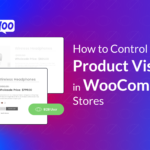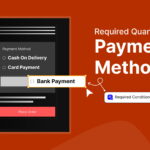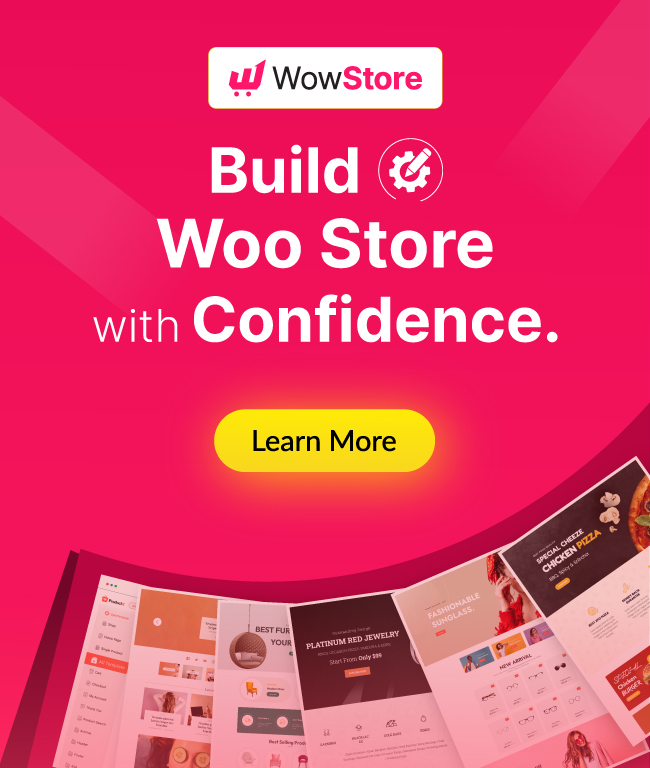In this age of rising e-commerce businesses, wholesale and retail pricing are two essential concepts for businesses to understand. Wholesale pricing is known to be the price that a manufacturer or distributor charges a retailer for a product. On the other hand, retail pricing is the price a retailer charges a customer for a product.
If you own an e-commerce store or marketplace like WooCommerce, you should have a clear understanding of the difference between wholesaler and retailer pricing for multiple reasons.
Even if you are just an ordinary business person who deals with buying and selling products every day, knowing what is the difference between retail price and wholesale price will help you with budgeting, accounting, product selection, and other decisions that impact a company’s bottom line.
Let’s dive in a little deeper to understand the whole concept of wholesale price vs retail price, its key differences, and the pros and cons of utilizing these pricing models in modern-day e-business.
What is Wholesale Pricing?
Wholesale pricing is a pricing strategy in which goods or services are sold to retailers or other businesses at a discounted price. This pricing strategy incentivizes retailers to purchase in bulk or in large quantities, which can help manufacturers or suppliers move inventory more quickly and efficiently.
This pricing is typically lower than the retail price, as the retailer will add their own markup to the product before selling it to consumers.
Wholesale pricing is commonly used in industries to sell items in bulk quantities, such as manufacturing, distribution, and retail, and can be an effective way for businesses to increase revenue and build relationships with their partners.
What is Retail Pricing?
Retail pricing is a pricing strategy in which goods or services are sold directly to consumers at a marked-up price. The retail price is higher than the wholesale price, as the retailer adds their own markup to the product to cover their operating costs and profit margin.
The pricing is commonly used by businesses that sell directly to consumers, such as brick-and-mortar stores, online retailers, and service providers.
The retail price is often influenced by supply and demand, competition, and consumer preferences and can vary depending on the product or service being sold.
Establishing an accurate retail price plays a crucial role in any business’ pricing strategy, directly affecting its turnover and profitability.
Difference Between Wholesale and Retail Price with Real-life Examples
| Wholesale Price | Retail Price |
| Wholesale pricing refers to the price at which goods or products are sold to retailers or other businesses for the purpose of resale. It is typically lower than the retail price, as it allows retailers to mark up the products and make a profit when selling them to end consumers. | Retail pricing refers to the price at which products or goods are sold directly to end consumers in a retail setting. It is the price that customers pay when purchasing products from a retailer or a store. On the other hand, retail price includes a markup to cover the retailer’s expenses and profit margin, unlike wholesale prices. |
| Wholesale pricing is commonly used in B2B (business-to-business) transactions, where manufacturers or suppliers sell their products in bulk to retailers, distributors, or other businesses. The price is usually negotiated between the manufacturer and the buyer based on factors such as the quantity purchased, the relationship between the parties, and the market conditions. | Retail pricing is used when a business sells directly to consumers. This covers a broad range of entities – from physical stores to online retailers to service providers. The retail price is the final price that consumers pay for a product or service after any applicable taxes, fees, or discounts have been applied. |
| Here’s an example to illustrate wholesale pricing: There is a clothing manufacturer that makes T-shirts. They set the wholesale price of each T-shirt at $10. This wholesale price is offered to retail stores that want to buy a large quantity of T-shirts for resale. Now, let’s say a retail store decides to purchase 100 T-shirts from the manufacturer. The total cost to the retailer would be $1,000 ($10 per T-shirt multiplied by 100). The retail store then sells these T-shirts to individual customers. They mark up the price and set the retail price of each T-shirt at $20. This markup covers the store’s expenses, profit margin, and other costs. So, customers who visit the retail store purchase the T-shirts at the retail price of $20.In this scenario, the clothing manufacturer offers a wholesale price of $10 per T-shirt to the retail store. This allows the retail store to earn a profit by selling the T-shirts at a higher retail price. The wholesale pricing model creates a win-win situation for both the manufacturer and the retailer, as they can generate revenue and establish a mutually beneficial business relationship. | Let’s consider an example to understand retail pricing: Imagine you walk into a local electronic store looking to buy a new smartphone. The store offers a particular model for $500. This price represents the retail price set by the retailer. The retailer has sourced the smartphones from a distributor or directly from the manufacturer. The retailer determines the retail price based on various factors, including the cost price of the product, operational expenses (such as rent, utilities, and staff salaries), marketing and promotional costs, and desired profit margin. These factors influence the markup added to the wholesale price. In this case, let’s assume that the retailer purchased the smartphones from the distributor for $400 each. To cover their expenses and make a profit, the retailer applies a markup of $100, setting the retail price at $500. As a customer, when you purchase the smartphone at the retail price of $500, you are paying not only for the cost of the product but also contributing to the retailer’s overheads, profit, and value-added services provided by the store, such as customer support, warranty, and a physical retail environment. |
| Overall, wholesale pricing plays a crucial role in the supply chain, allowing businesses to distribute products efficiently, offer competitive prices to customers, and maintain profitability throughout the distribution process. | Overall, retail pricing is a crucial aspect of the retail industry, allowing retailers to cover their costs, generate profits, and provide value to customers through the availability of products, convenience, and additional services. |
Wholesale Price vs Retail Price: Advantages and Disadvantages
| Pricing Model | Advantages | Disadvantages |
Wholesale Price | 1. Increased sales volume: Wholesale pricing can encourage retailers to order in larger quantities, increasing the business’s sales volume. 2. Consistent revenue: With wholesale pricing, businesses can count on a consistent revenue stream from their wholesale customers. 3. Reduced marketing costs: A strong wholesale pricing strategy can reduce the need for extensive marketing efforts, as wholesalers may promote the business’s products to their customers. | 1. Lower profit margins: Wholesale pricing typically involves selling products at a lower price point, which can result in lower profit margins for the business. 2. Limited control over pricing: Once a business sets a wholesale price, it may not have control over the final retail price that its products are sold for. 3. Dependence on a few large customers: Businesses that rely heavily on wholesale pricing may become overly dependent on a few large customers, which can be risky if those customers decide to reduce their orders or switch to a competitor. |
Retail Price | 1. Higher profit margins: Retail pricing typically involves selling products at a higher price point, which can result in higher profit margins for the business. 2. Greater control over pricing: With retail pricing, businesses have greater control over the final price that their products are sold for, which can help them maintain their brand image and positioning. 3. Direct customer feedback: Retail pricing allows businesses to receive direct customer feedback on their products and pricing, which can help them refine their pricing strategy. | 1. Greater marketing costs: Retail pricing typically requires more extensive marketing efforts to attract and retain customers, which can result in higher marketing costs for the business. 2. Higher inventory costs: Retail pricing requires businesses to maintain larger inventories to meet the demands of individual customers, which can result in higher inventory costs. 3. Greater price sensitivity: Retail pricing tends to be more price sensitive, as individual customers are often more aware of pricing and more likely to compare prices across different retailers. This can make it more challenging for retailers to maintain profit margins while still competing with other stores on price. |
Comparing Wholesale Pricing Model vs Retail Pricing Model
When it comes to a comparison between the wholesale pricing model and the retail pricing model, it is closely relevant to what was already discussed above. In the wholesale pricing model, businesses sell their products at a fixed price to a distributor or retailer who then sells the products to the end customer. The price is typically set based on the cost of production plus a markup for profit. This pricing model is commonly used for bulk or wholesale purchases and is often used in the business-to-business (B2B) market.
On the other hand, the retail pricing model involves selling products directly to the end customer at a markup from the cost of production. This pricing model is commonly used in business-to-consumer (B2C) markets and involves businesses setting a price that they believe their target customer is willing to pay. Retailers may also use promotional pricing, such as discounts or sales, to attract customers and increase sales.
Both pricing models have their advantages and disadvantages and can be effective depending on the business and its target market. The wholesale pricing model may be more suitable for businesses that sell in bulk to other businesses, while the retail pricing model may be more suitable for businesses that sell directly to consumers.
Take Advantage of the Wholesale Pricing Model with WholesaleX

The comparison above demonstrated the significant differences between wholesale and retail price and pricing models.
If you run a wholesale business from your WooCommerce store, you’ll understand the difficulty of offering different wholesale pricing, bulk discounts, tax exemption, and shipping regulations to customers. It would be so much easier if it were hassle-free and straightforward – unfortunately, that isn’t always the case until now.
WholesaleX gets rid of all those struggles making it hassle-free to start B2B+B2C wholesaling, giving you the power to reach more customers and increase your profits. This comprehensive WooCommerce wholesale solution allows you to easily manage bulk orders, wholesale pricing, and discounts – all from one place.
Its unique dynamic rule feature enables you to adjust pricing and set discounts dynamically for your customers with attributes like product discounts to offer the buyers reduced prices on different products. You can offer multi-tiered pricing based on the volume of purchases your customer have made.
Get to easily set discounts for your customers on the number of their carted products or order quantity. Allow the customer to enjoy payment discounts whenever they make purchases through a specified payment method. Set the maximum and minimum quantity a customer can purchase along with the very popular BOGO feature that enables you to provide a Buy 1 Get 1 offer on specific products.
The attributes of WholesaleX’s dynamic rule system continue with other useful features like:
- Product visibility to ensure your visitors are seeing the right items
- Shipping rule to set a fixed shipping cost or offer absolutely free shipping globally
- Charge extra to discourage customers from using certain payment methods
- Tax rule to impose or exempt taxes on certain products
- Same product multiple pricing to set different prices on the same product
- Category-wise product pricing is based on purchased quantity and customer type.
- Attribute pricing to set different prices for the same product with different attributes
- Restriction with cart condition based on cart item’s total quantity, weight, value, etc.
- Discount usage limitation to limit the number of times a customer can avail of a discount
Also with WholesaleX, you can do a lot more than just setting Dynamic Pricing Rules, like:
- Customizable User Roles: Modify user role access levels and offer custom discounts for improved customer experience.
- Bulk Ordering: Enjoy unlimited bulk ordering with search options with categories and tags, including easy save and add-to-cart features for your convenience.
- WholesaleX Wallet: Seamless payments within the store with no transaction charges and offer an easy way to top-up for added convenience.
- In-built Conversation: Customers can easily communicate with you through the integrated conversation feature to ask questions about the products on sale.
- Quote Requisition: Take advantage of ‘Request A Quote’ to efficiently negotiate prices and conveniently save, edit, and manage quotes.
- Private Store: Secure a private store with just one click, granting access to each user through login credentials and allowing you to control which products and categories are visible.
If you are looking for a reliable solution to integrate wholesaling option into your WooCommerce store to take your B2B business to the next level, then.
Leverage the Pricing Models That Best Suit Your Business Model
As businesses grow, you need to ensure that your pricing model is able to keep up with your changing needs. Choosing the right pricing model can help businesses optimize their revenue, increase customer satisfaction, and reduce costs.
Additionally, the right pricing strategy can be the difference between a successful product or service and one that fails to meet its objectives. By understanding your customer’s demand, competitors’ prices, and the costs of providing the product or service, your business can develop pricing strategies that maximize your profitability and customer satisfaction.
So make sure to leverage these models to maximize your profits and create a successful pricing strategy for your e-business.










